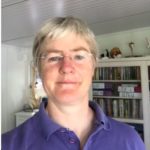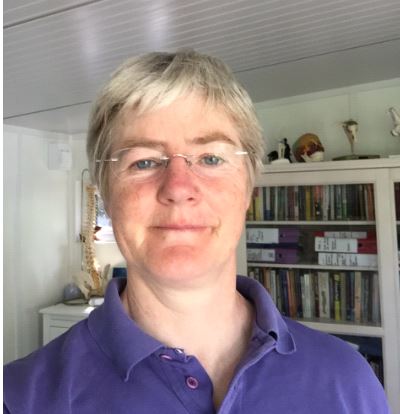Objective Activity
Patient feedback
What do your patients really think?
Maria Hayes
Maria Hayes (BSc (Hons) Ost, PG Dip. Med. Ed.)
Maria qualified from the London School of Osteopathy (LSO) in 2004. She now has a clinic in London and is also a clinic tutor and teacher at the LSO.
“I decided to focus on getting feedback that would give me a better understanding of my ability to communicate in a way which developed and encouraged a two-way relationship throughout the therapeutic encounter. I joined nine other osteopaths from around the UK for a series of four webinars led by the GOsC’s Professional Standards team.
The group discussed:
• why feedback is essential to us as primary healthcare practitioners
• possible areas of practice we need feedback on
• how we can obtain feedback and
• what we can do with the feedback we collect.
Some members of the group had never formally collected patient feedback and were apprehensive about aspects of the process – from the practicalities of designing a form to how to manage negative feedback. However, through collective discussion, we recognised the value of feedback from patients to monitor our performance across all aspects of our interactions with patients. This can include: the booking process; the premises and equipment; provision of treatment and advice; devising a management plan for each patient, and the important communication skills.
Paper or electronic?
Various methods of information collection were discussed, with much debate over collecting feedback electronically or using paper-based methods. As patients often have very busy schedules, we wanted to take this into account when deciding how to distribute feedback questionnaires to obtain the most replies. We also talked about how the Osteopathic Practice Standards (OPS) could provide a good starting point to guide which questions to ask our patients to enable us to assess the quality of our performance.
Identifying a focus for feedback
I decided to focus on seeking feedback that would give me a better understanding of my ability to communicate in a way which developed and encouraged a two-way relationship throughout the therapeutic encounter. I developed 13 questions, based on the OPS relating to Communication and Patient Partnership. The first 10 gave tick box scales – not very well, fairly well and very well – while the last three questions asked for comments.I included an explanatory paragraph at the start of the questionnaire: “It is important to me that I ensure that I continually review and enhance your experiences as a patient.
How will I use the feedback?
This was the first time I have formally sought feedback from my patients and I found it to be an extremely useful and informative process. It is nice to know that my approach to practice is appreciated by my patients and I’ve also reflected on the information gathered, in order to plan steps to improve certain aspects to enhance their experiences.
Based on the feedback, which suggested that patients would like to take away print-outs of exercises to do at home, I have started to compile a series of exercise handouts. This requires careful consideration as treatment and rehabilitation needs to be specifically tailored to the individual, rather than just providing a generic set of exercises.
I also plan to produce and distribute a further questionnaire in 6-8 months to ensure the changes I make produce positive feedback. I would highly recommend this aspect of CPD as it has illustrated how important it is to have a dialogue with patients in order to improve practices and continue to develop our professional approach.”
Find out more about gathering patient feedback:
Read our Patient Feedback Workbook
Consider gathering feedback from the patient’s perspective

About the author
Maria Hayes
Maria (BSc (Hons) Ost, PG Dip. Med. Ed.) qualified from the London School of Osteopathy (LSO) in 2004.

